Since June, the total value locked (TVL) of ETH in restaking has increased by 30%, with fewer than 1,000 users participating in restaking daily; EigenLayer occupies 84% of the market share.
Written by: OurNetwork
Translated by: DeepTech TechFlow
Since June, the total value locked (TVL) of ETH in restaking has increased by 30%, with fewer than 1,000 users participating in restaking daily; EigenLayer occupies 84% of the market share.
The restaking protocol aims to increase the yield of staked assets by supporting external systems, which are commonly referred to as active validation services (AVS). These protocols have spawned billions of dollars in liquidity restaking tokens (LRT), representing the amount deposited in restaking protocols. Interest in restaking increased in the first half of 2024, but has now stabilized— the total ETH staked in USD terms in restaking protocols has decreased by 38% from its peak in June. Excluding the volatility of ETH-USD, the amount of staked ETH has remained stable during the same period, with very limited net inflows. There are currently 23 AVS, with liquidity restaking accounting for 75% of the total TVL.
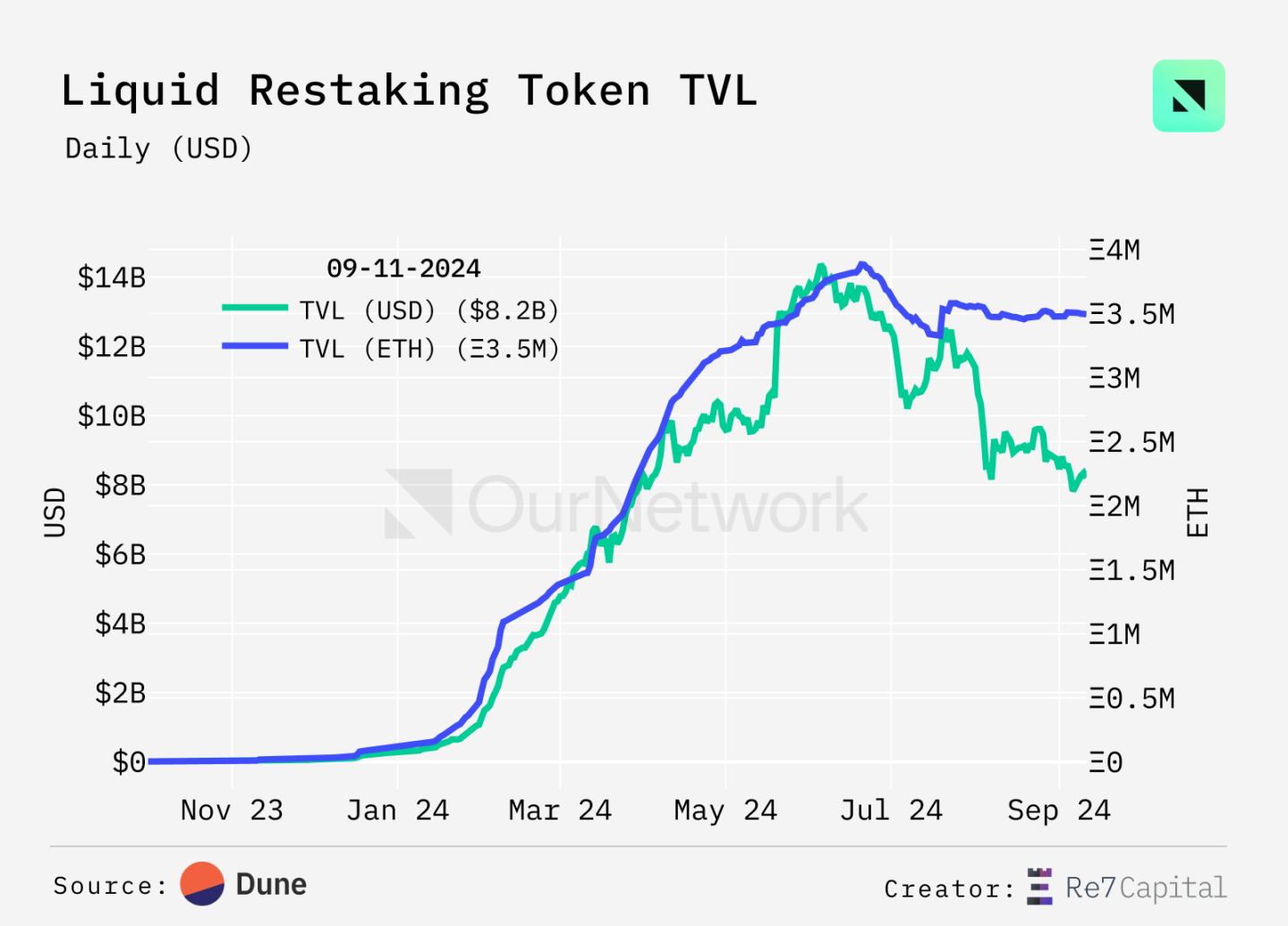
Dune - @hashed_official
Eigenlayer is the leading restaking protocol, occupying 84% of the market share. The emerging protocol Symbiotic ranks second, with 12%, while Karak ranks third, with 4%. As of September 12, Eigenlayer experienced a net outflow of -94,000 ETH, approximately $2.22 billion, in the past month. Karak also experienced a net outflow of -14,000 ETH, approximately $33 million, during the same period. Symbiotic is the only protocol showing positive change, with an increase of +253,000 ETH, approximately $598 million.
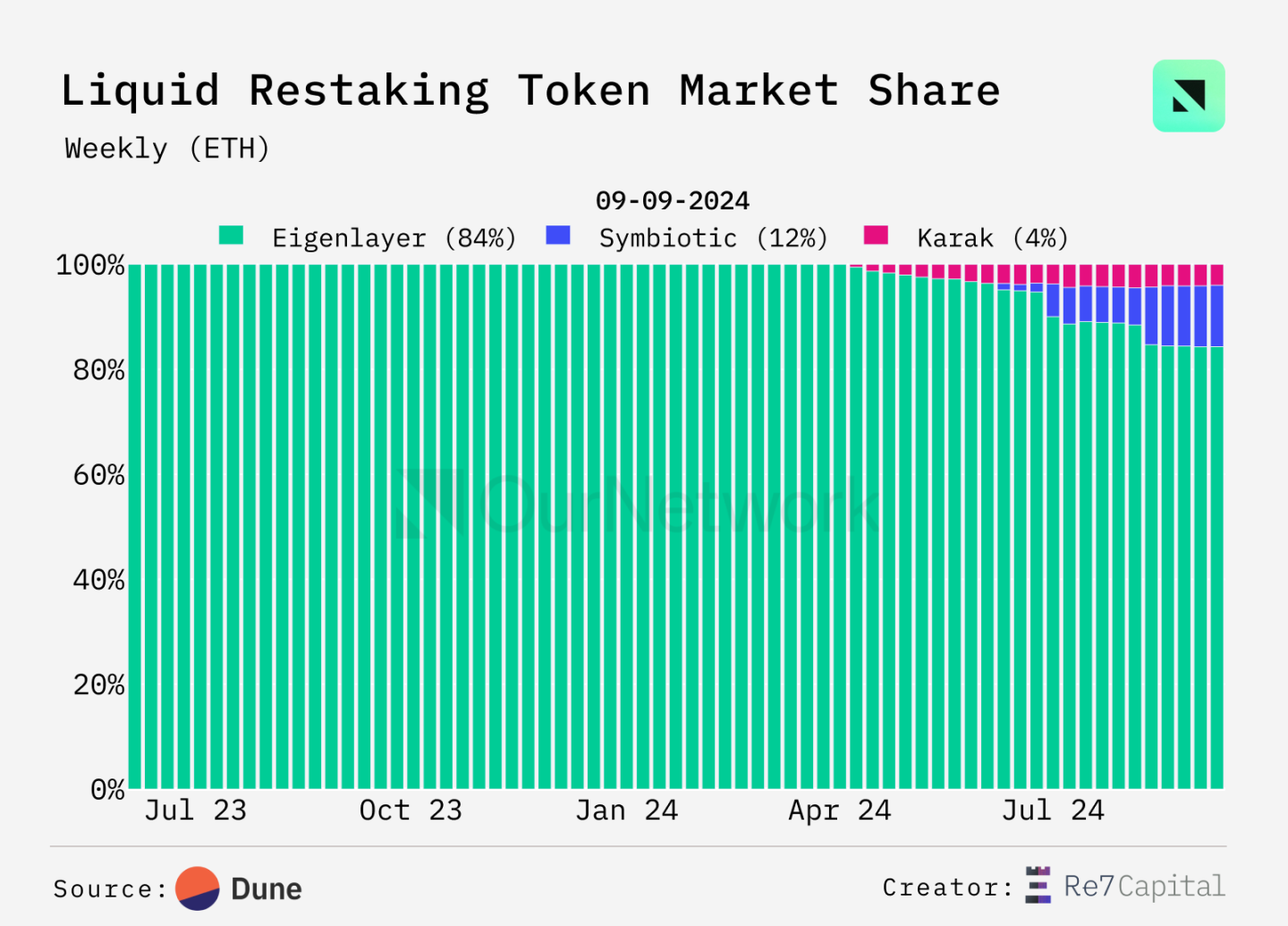
Dune - blocklytics
Users can directly deposit ETH and LST into Eigenlayer, or indirectly deposit through liquidity restaking projects like Ether.fi. Liquidity restaking protocols mint a type of token called LRT, representing claims on staked assets in protocols like Eigenlayer—Ether.fi's eETH is the largest LRT supported by Eigenlayer, with 1.96 million issued and a market value of $8.04 billion. Puffer's pufETH has issued 515,000, and Renzo's ezETH has issued 363,000.
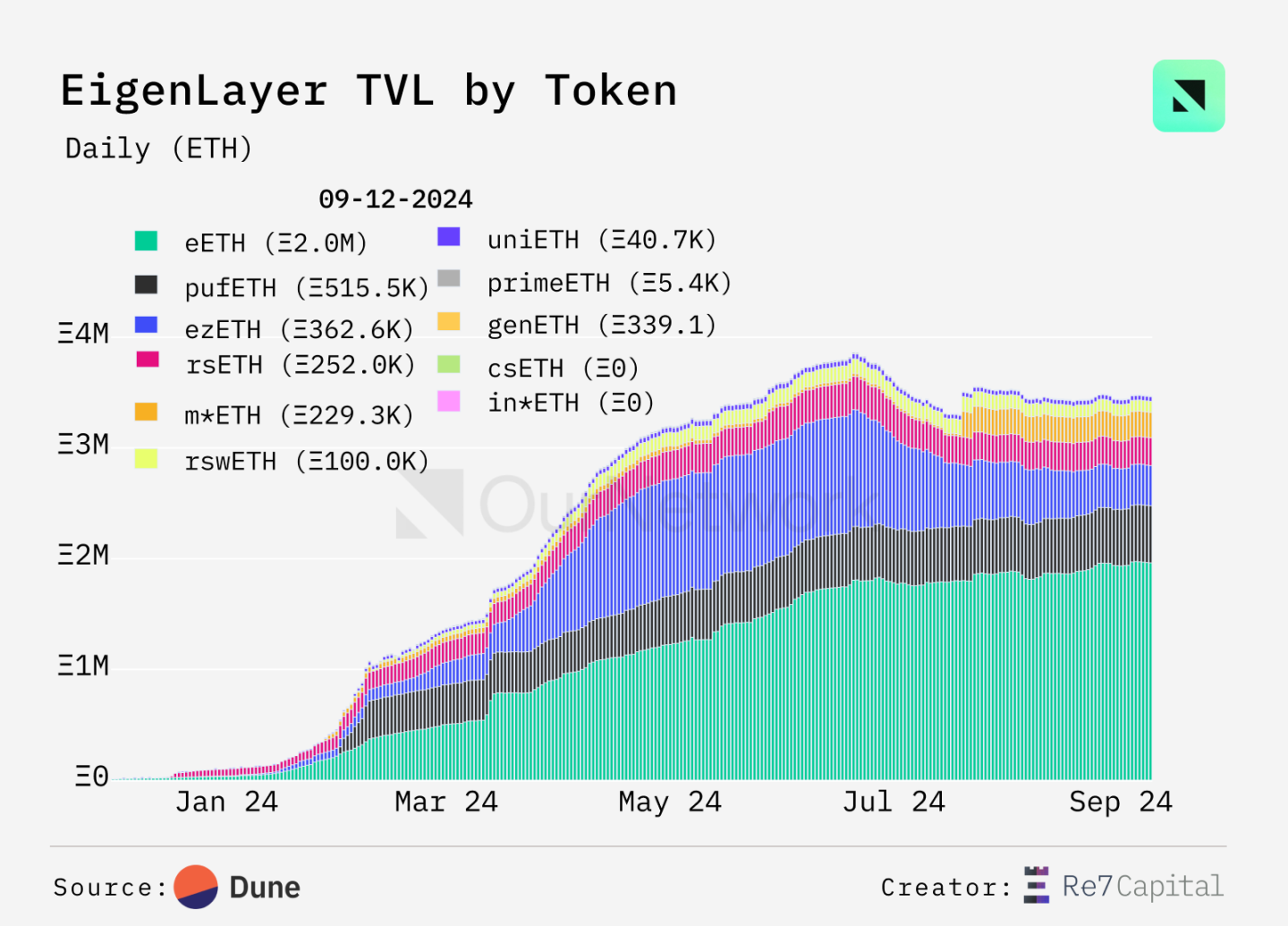
Dune - @hahahash
The number of liquidity restakers has decreased by 90% from its peak of 10,000 individuals in February. Among the remaining approximately 1,000 individuals, the majority (over 95%) operate through Ether.fi and Puffer.
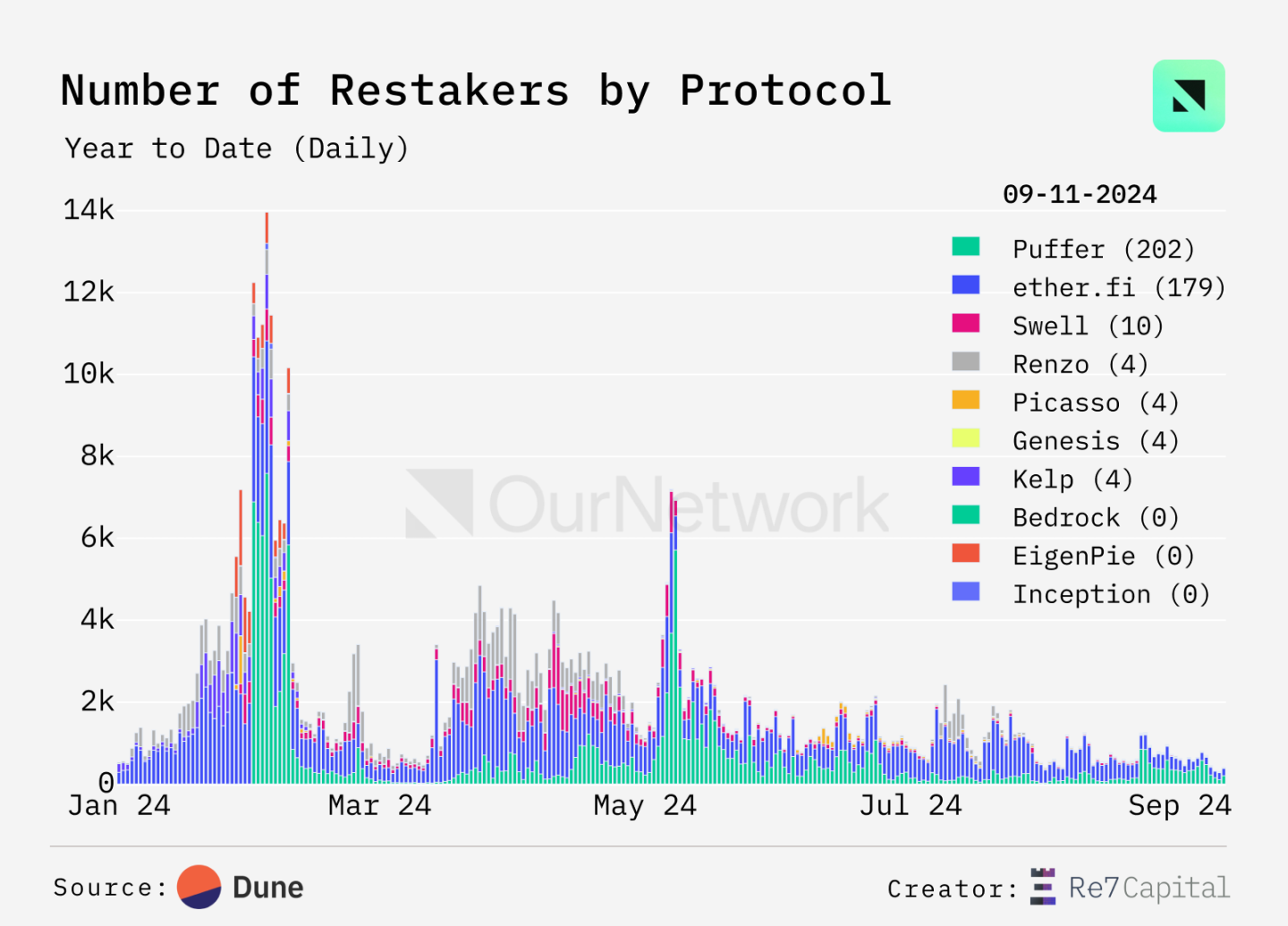

Dune - cryptokoryo
Trading Highlight: This is the first transaction providing funds for Kiln, which operates as an AVS operator (AVS operators use staked assets for validation). Today, this address has become one of the top operators of Eigenlayer, with over 39,000 ETH and 5,400 delegators.
Ether.fi
In the past month, the lending protocol has been the largest beneficiary of weETH/eETH liquidity flow
In the past month, the lending protocol experienced the highest net inflow of weETH/eETH (leading LRT) through Ether.fi, totaling $252 million. During the same period, users injected $52 million into bridging protocols, and $39 million into EOAs and Safes. The largest net outflow came from restaking, decreasing by $52 million, mainly due to a significant outflow of $61 million on August 15. This coincided with the launch of another LRT, eBTC, by Ether.fi, which may have directed supply to Symbiotic's eBTC/weETH, explaining part of the outflow.
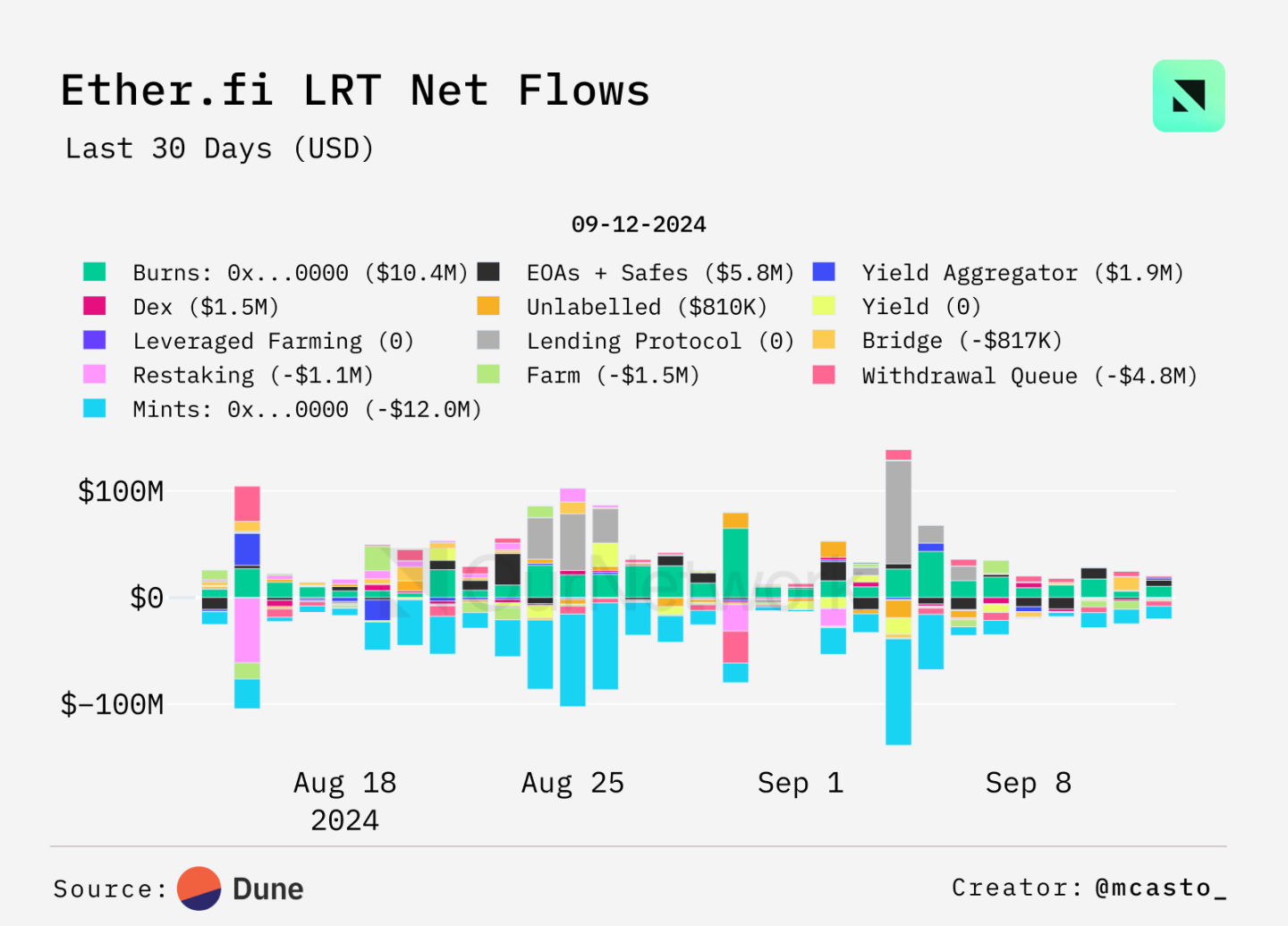
Dune - @mcasto_
So far this year, Aave has seen the largest growth in weETH supply flow, increasing its market share from 1.4% when deposits opened in mid-April to the current 35%. This growth is mainly due to users employing circular strategies and a strong demand for borrowing stablecoins using weETH as collateral.
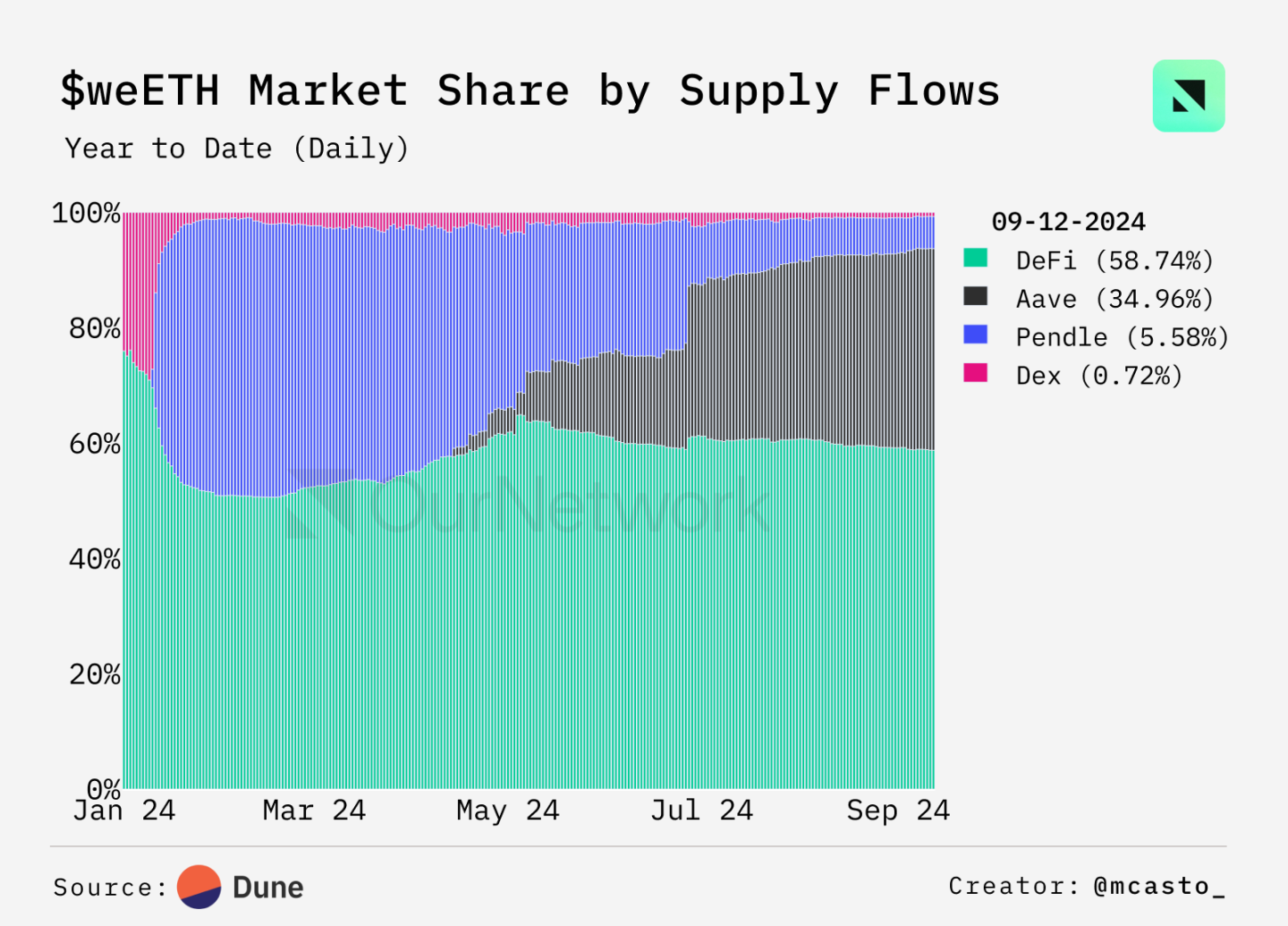
Dune - @masto_
In the DEX ecosystem, Ether.fi's governance token ETHFI's TVL has recently increased on Uniswap v3, primarily due to liquidity moving from Curve to Uniswap in early August. This move was driven by the Ether.fi team, who transferred liquidity purchased from the treasury to Arrakis on Uniswap v3.

Dune - @masto_
Trading Highlight: This transaction injected liquidity into Arrakis' automated liquidity solution, previously extracted from Curve. This is the second-largest liquidity injection since the pool's existence. Additionally, 80 ETH, valued at $409,000 at the time, was injected into this transaction. After this liquidity injection, almost all of ETHFI's DEX liquidity has gone through Uniswap v3 pools.
Swell
Swell's swBTC total value locked has surpassed $30 million
Although most of the discussion about restaking revolves around ETH LRT, Swell's new LRT, swBTC, has recently gained attention. The new product from Swell provides users with the opportunity to earn potential restaking rewards on the top three restaking platforms on Ethereum—EigenLayer, Symbiotic, and Karak. In just 10 days, the total value locked (TVL) of swBTC has surpassed $30 million, with over 560 individual depositors participating. As BTC liquidity becomes a sustained trend, the increase in BTC LRT could become a positive on-chain catalyst.
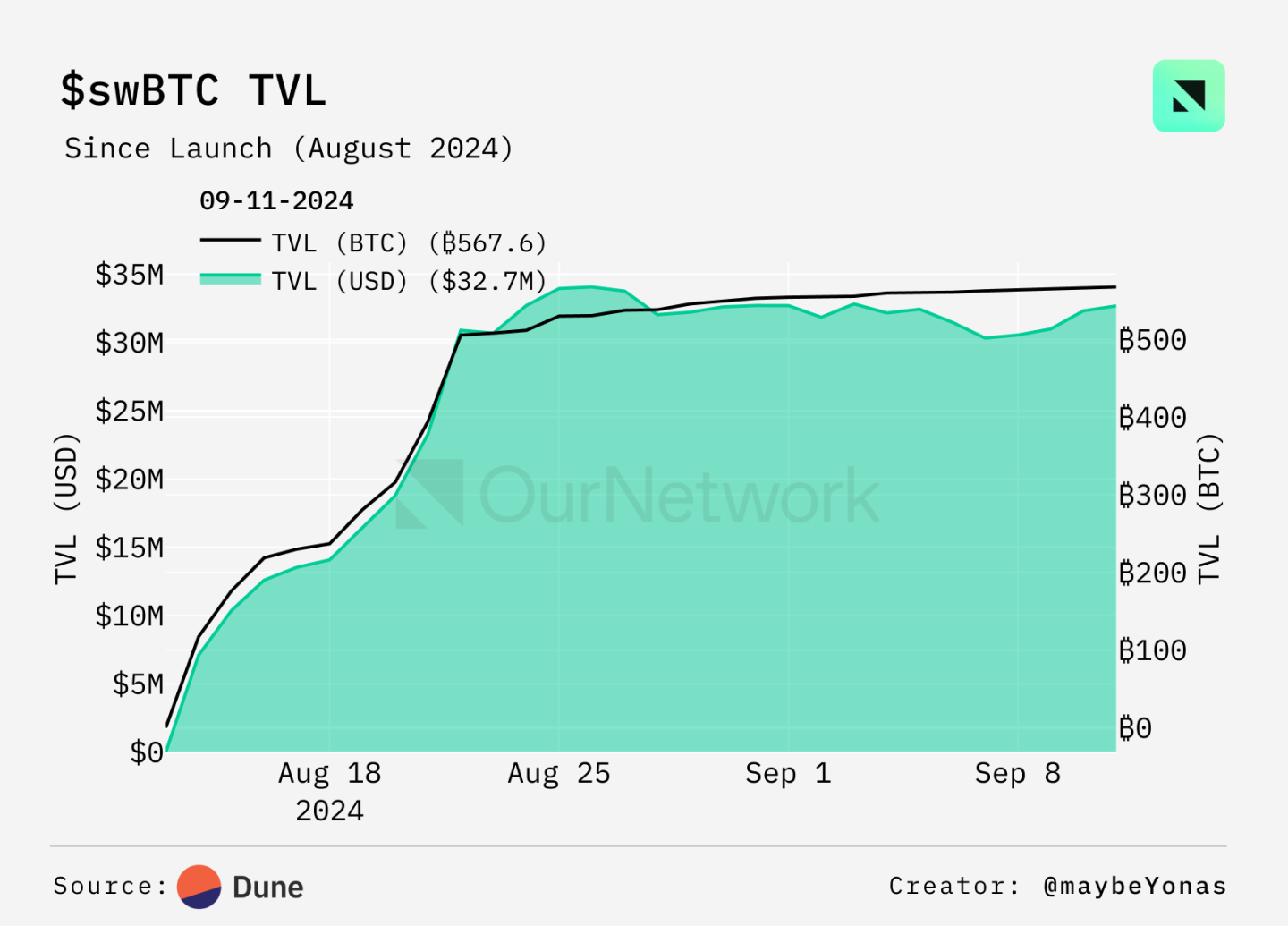
Dune - @maybeYonas
Approximately 8% of the supply of swBTC has flowed into key DeFi protocols such as Curve and Morpho within about a month of its launch. Additionally, Swell is developing a Layer 2 platform, with 68% of the swBTC supply already injected into the contracts of this expansion platform for its upcoming launch.
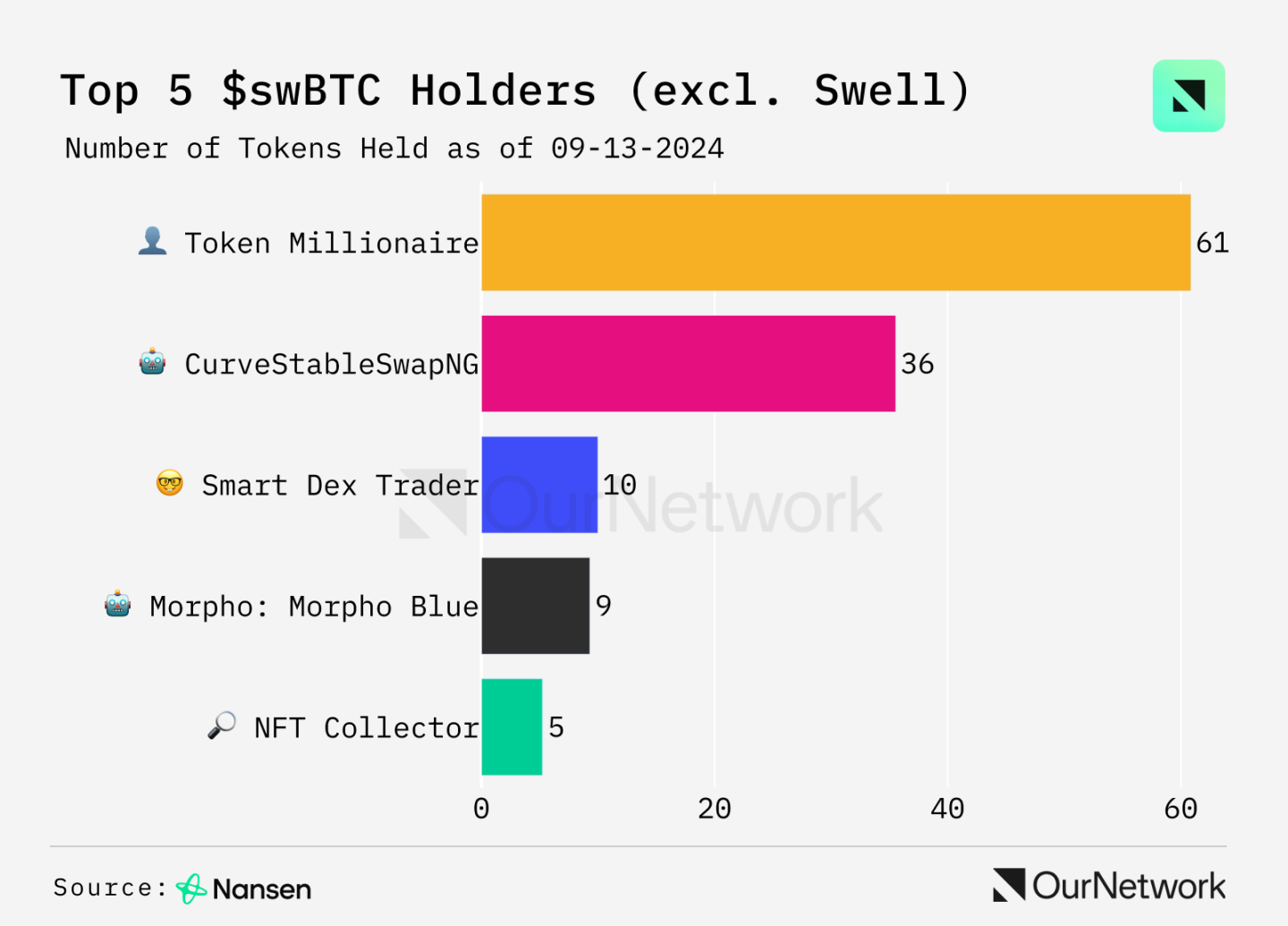
Nansen
Users continue to express high interest in the potential use cases by depositing funds into Swell's Layer 2 contracts. Despite the completion of the snapshot records for the announced airdrop, approximately 460,000 ETH and over $1 billion in funds are still deposited. The expansion solution is planned to be officially launched at the end of the fourth quarter.
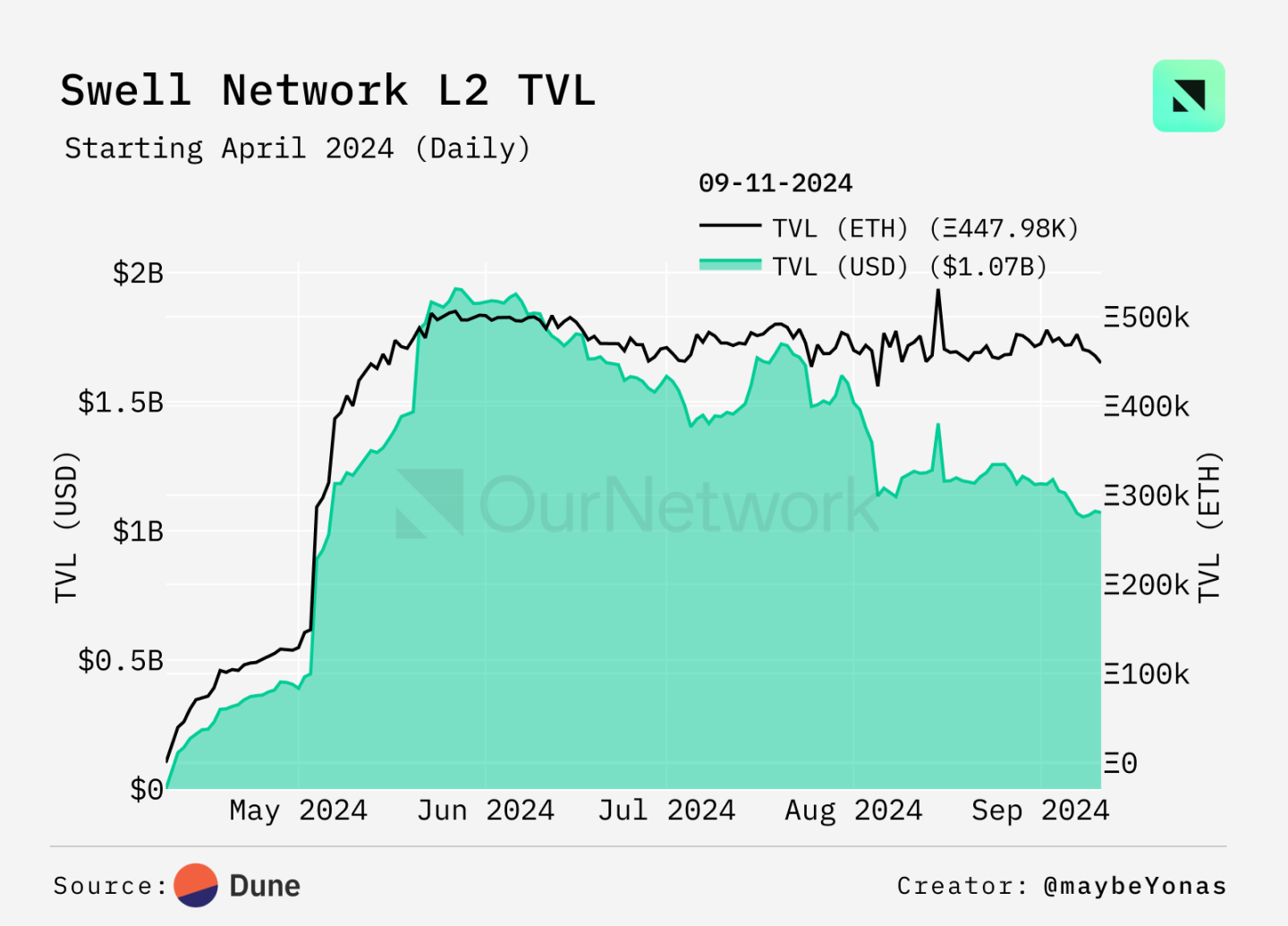
Dune - @maybeYonas
Trading Highlight: When examining the usage of swBTC by some early adopters, this wallet deposited 100 swBTC into the Swell L2 contract, valued at over $5.9 million. According to the relevant wallet, this address may belong to Amber Group, a well-known asset management company with over 3,000 institutional clients.
Symbiotic
Symbiotic's TVL exceeds $1.5 billion, with the addition of new tokens
Symbiotic's TVL, as the second-largest restaking protocol after Eigenlayer, has surpassed $1.5 billion, with the addition of other assets such as BTC, Ethena, and sUSDe.
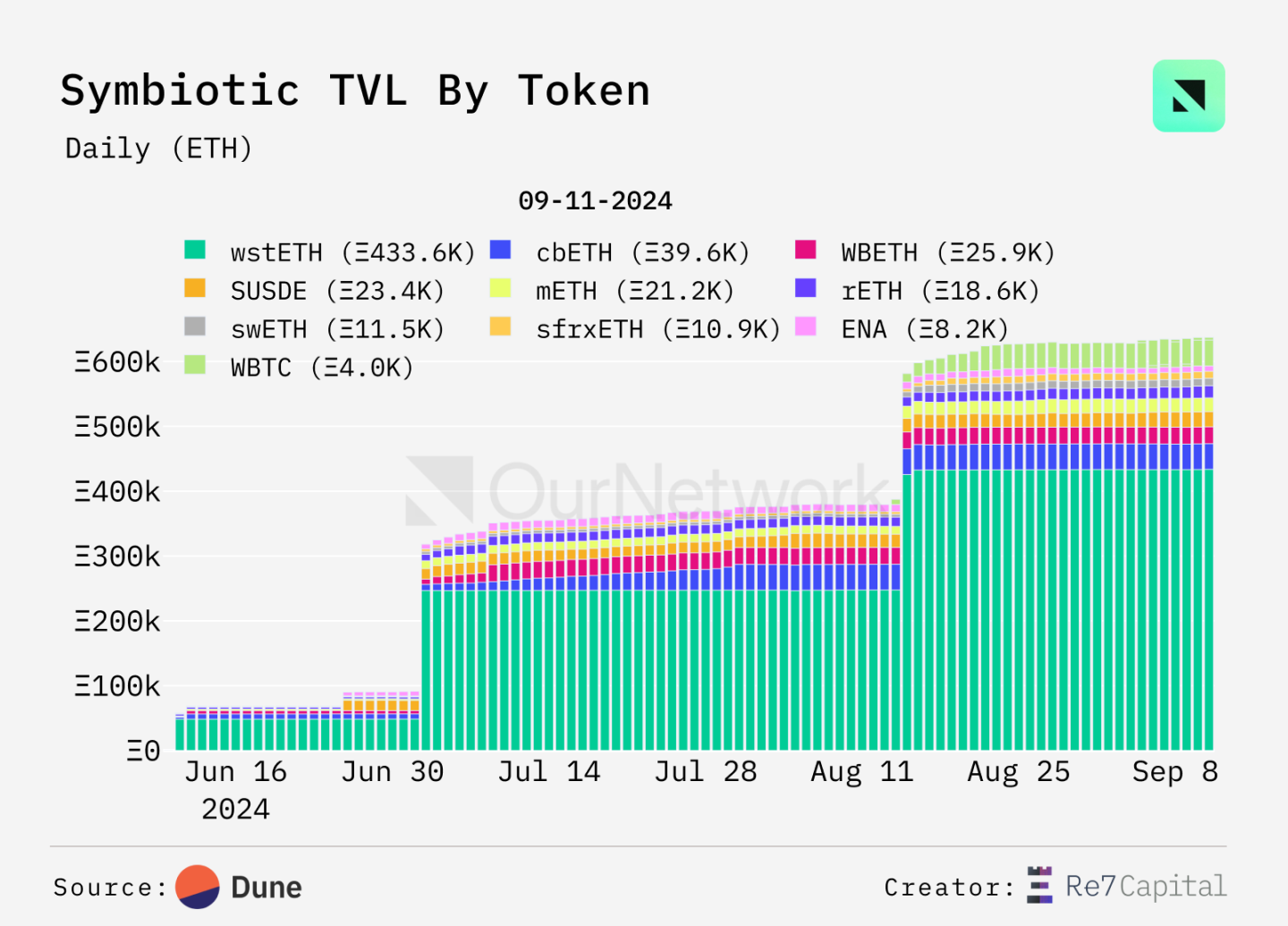
Dune - maybeYonas
Funds pools like Re7LRT represent over 70% of depositors, reflecting the growth of liquidity restaking tokens on the Symbiotic protocol.
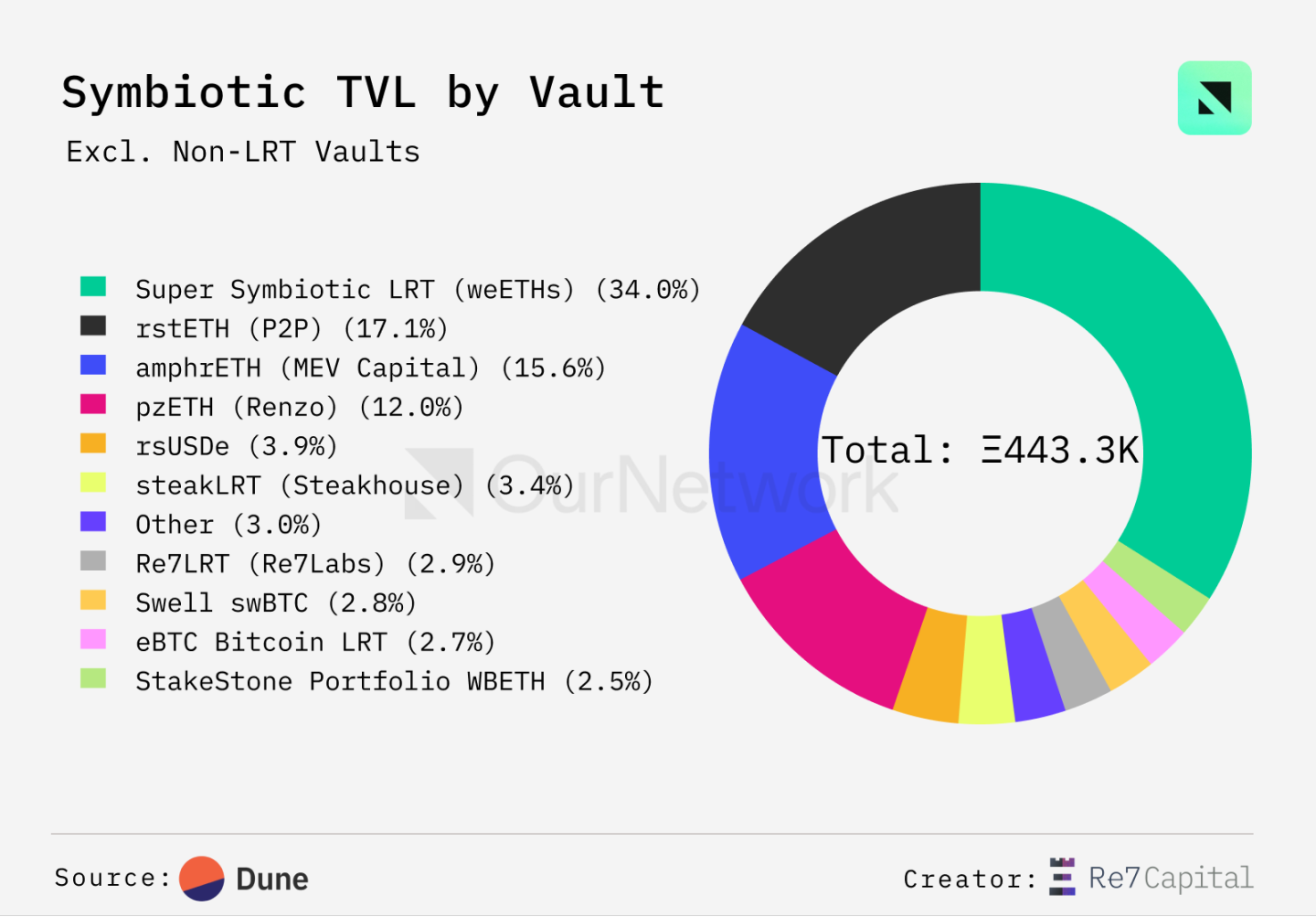
Dune - @maybeYonas
BTC restaking has officially begun, and Symbiotic is one of the main platforms for depositing BTC. In the past month, over $100 million worth of BTC has been deposited, with BTC LRT from Re7, Ether.fi, and Swell driving this explosive growth.
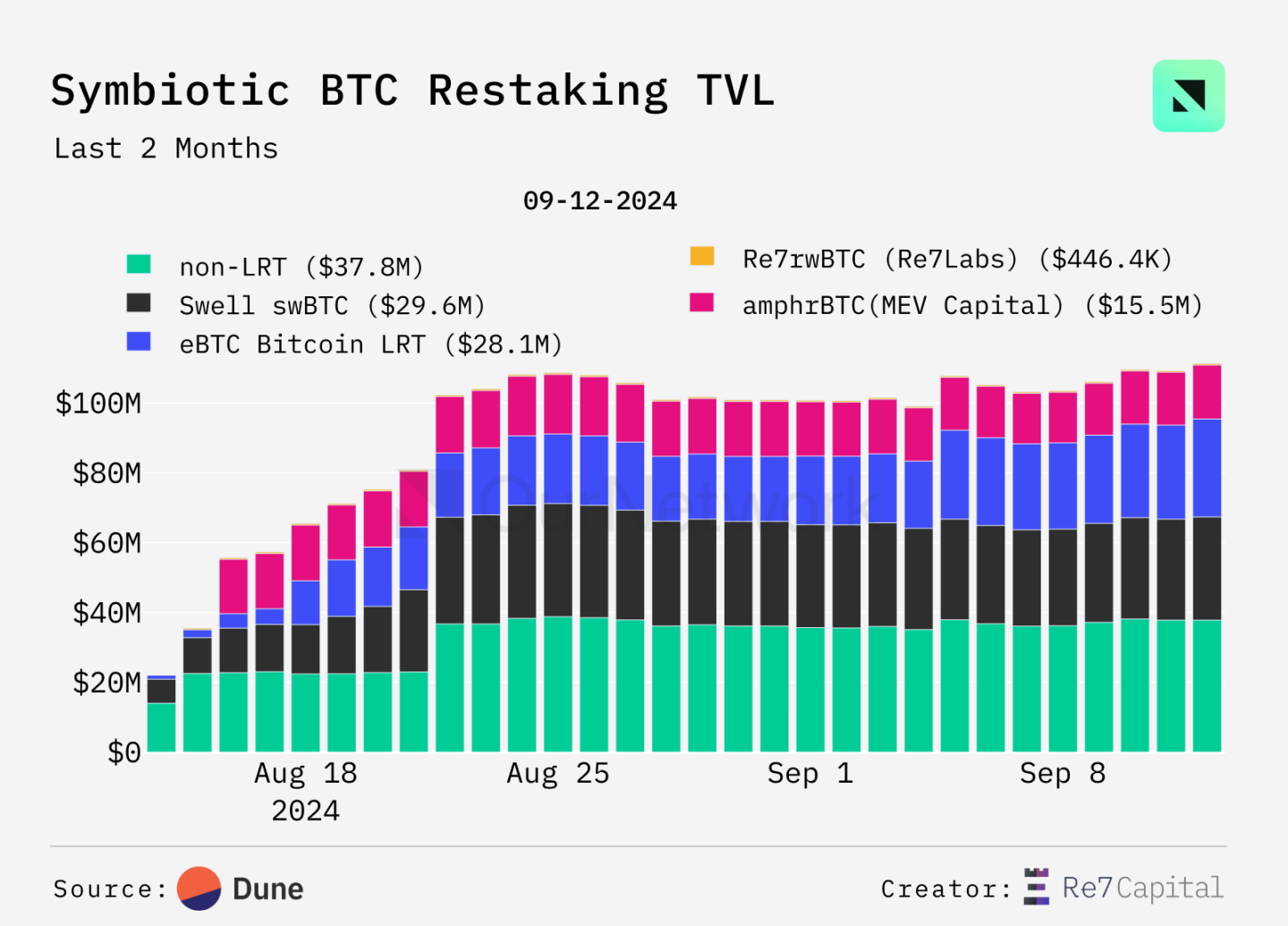
Dune - @maybeYonas
Trading Highlight: Profit trading using Re7LRT remains active. This large holder has set fixed income of over 300 ETH through Pendle, a yield-splitting protocol, with maturity dates for Re7LRT in September and December.
Karak
Karak's ETH TVL remains stable at 280,000, for nearly 3 months
Karak, as the third-largest restaking protocol by total value locked (TVL), has maintained a stable deposit of 280K ETH, with no significant new inflows in the past three months. This may be due to challenging market conditions and the emergence of competitors like Symbiotic, which, although launched later than Karak, now attracts three times the ETH. To keep up, Karak has accelerated the process of introducing new assets.
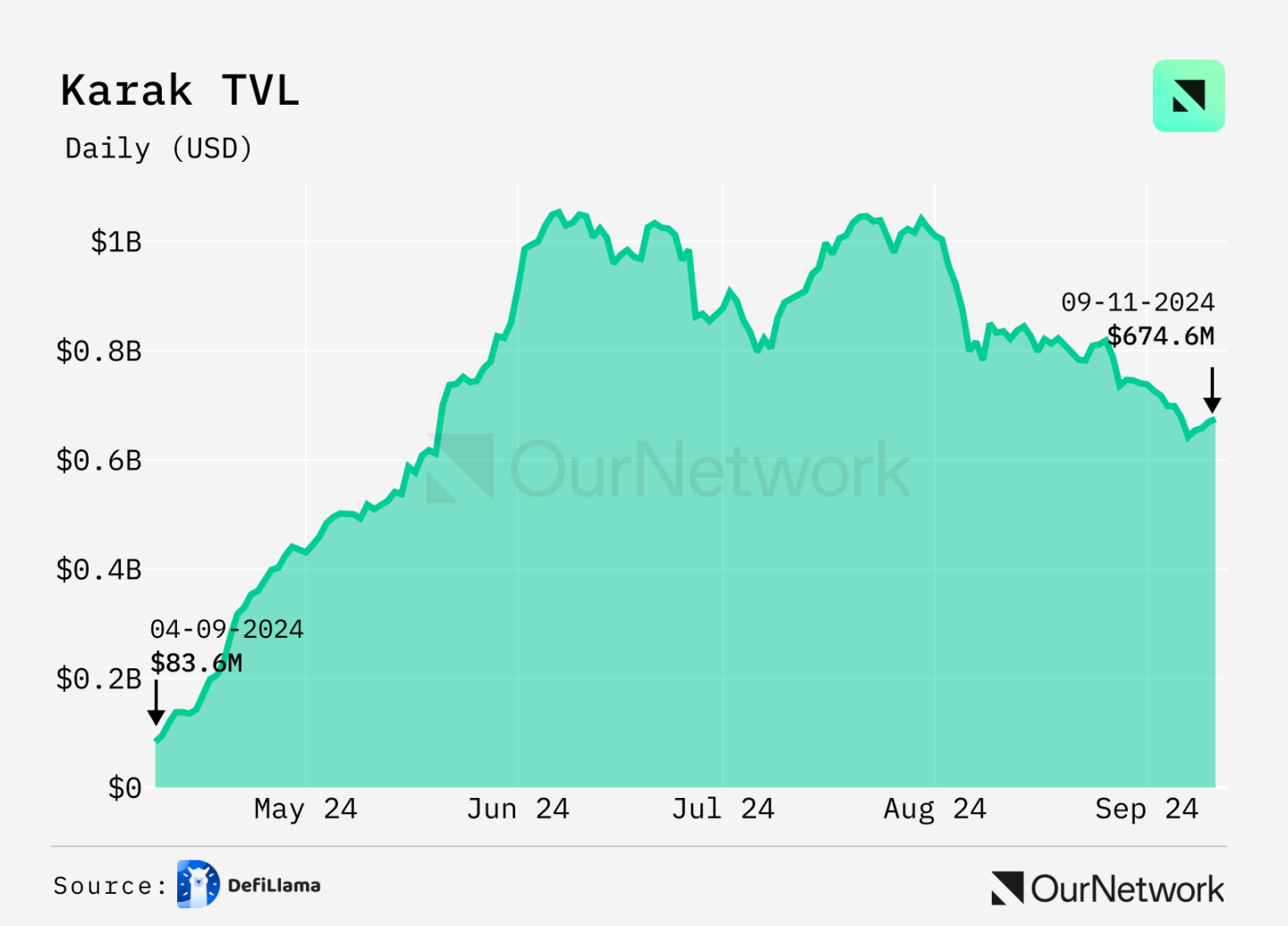
DeFiLlama
In the past 7 days, users have withdrawn 6,025 ETH from Karak, indicating a lack of growth compared to competitors. Users may choose to withdraw funds due to decreased attractiveness of Karak's incentive program.
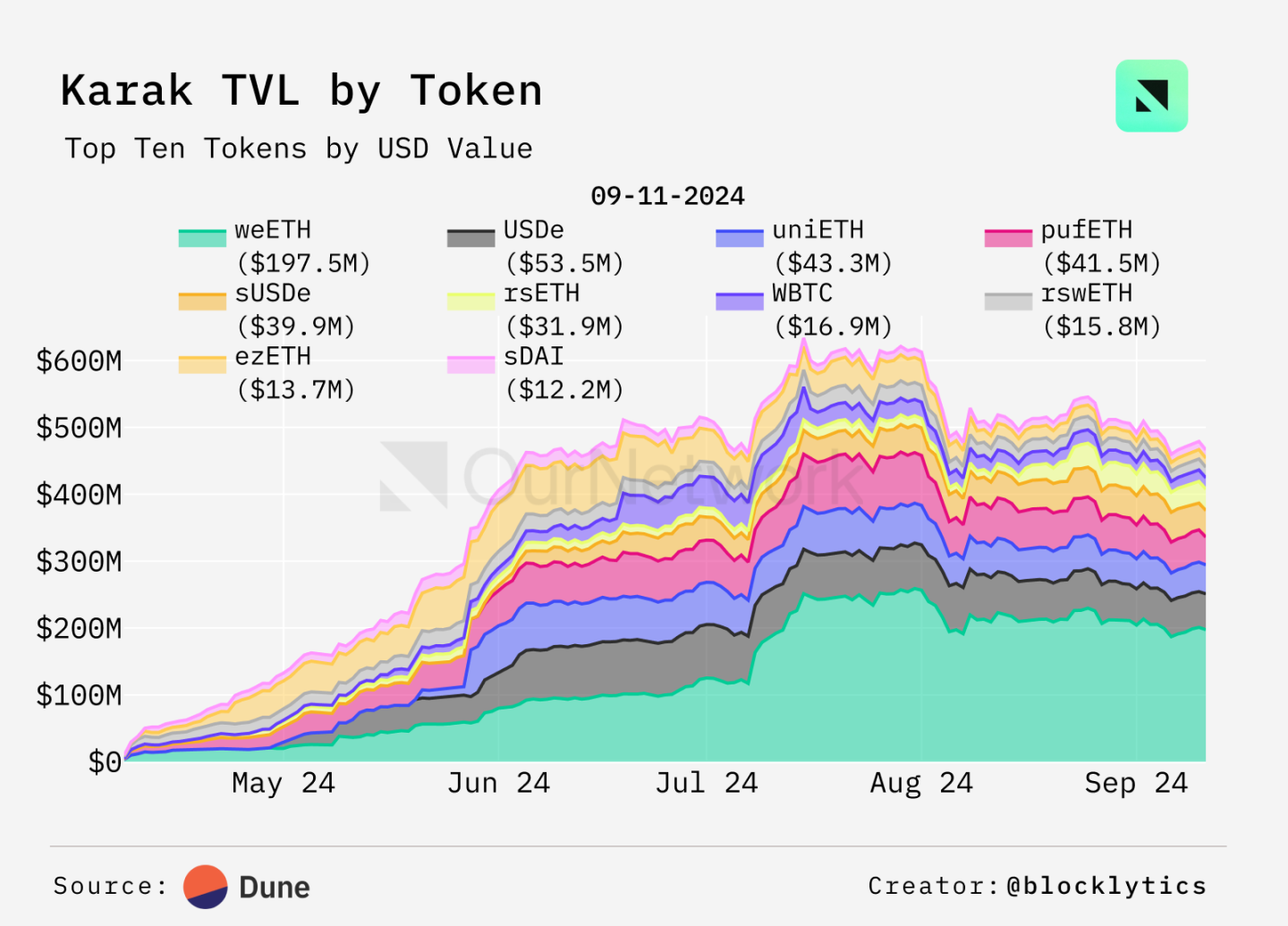
Dune - @blocklytics
This pie chart shows that EigenLayer's LRT and Pendle's LRT derivatives account for 61% of Karak's total value locked (TVL). Given this significant reliance on competitor assets, Karak may need to explore new strategies to mitigate risks associated with such dependencies.
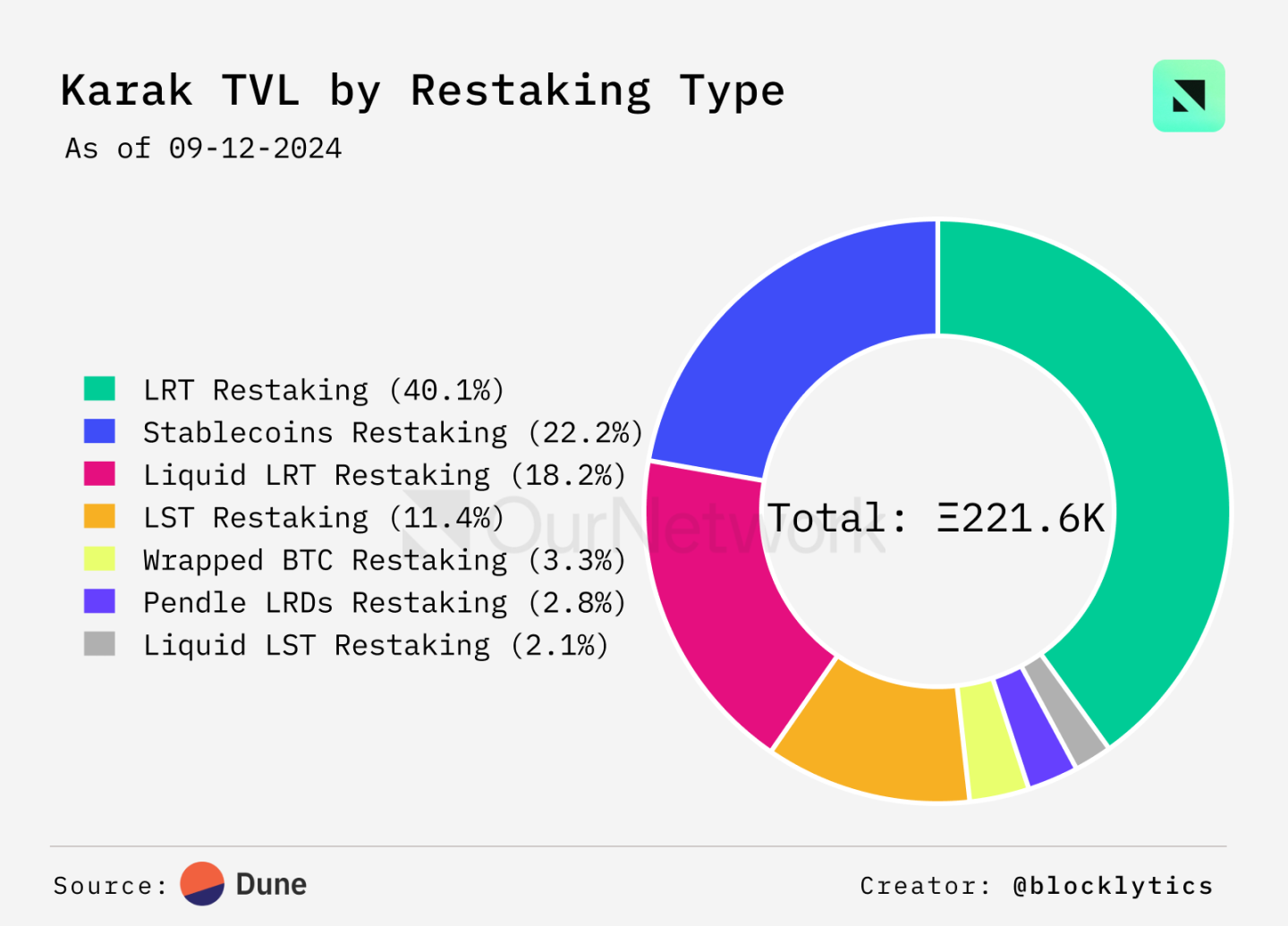
免责声明:本文章仅代表作者个人观点,不代表本平台的立场和观点。本文章仅供信息分享,不构成对任何人的任何投资建议。用户与作者之间的任何争议,与本平台无关。如网页中刊载的文章或图片涉及侵权,请提供相关的权利证明和身份证明发送邮件到support@aicoin.com,本平台相关工作人员将会进行核查。




